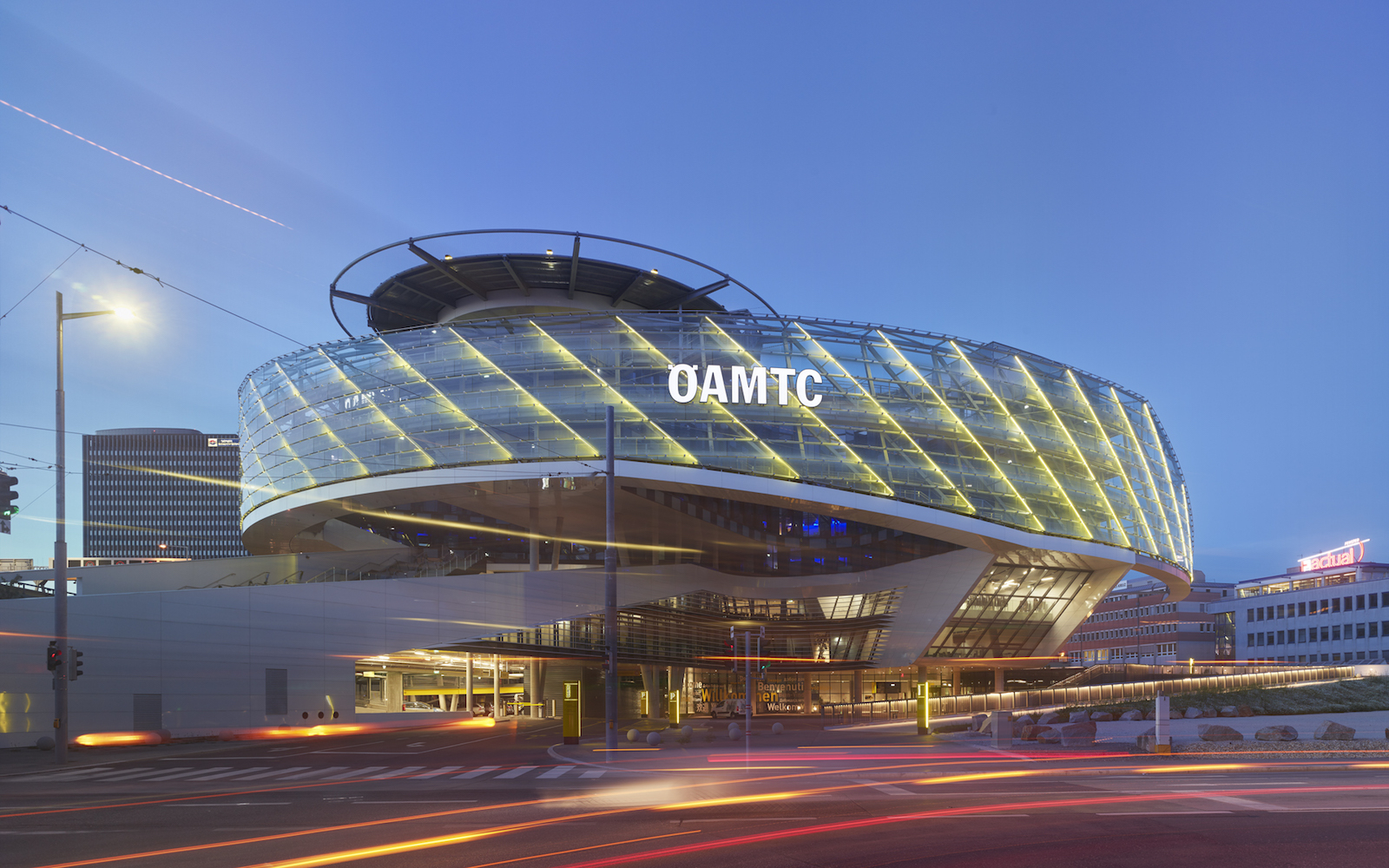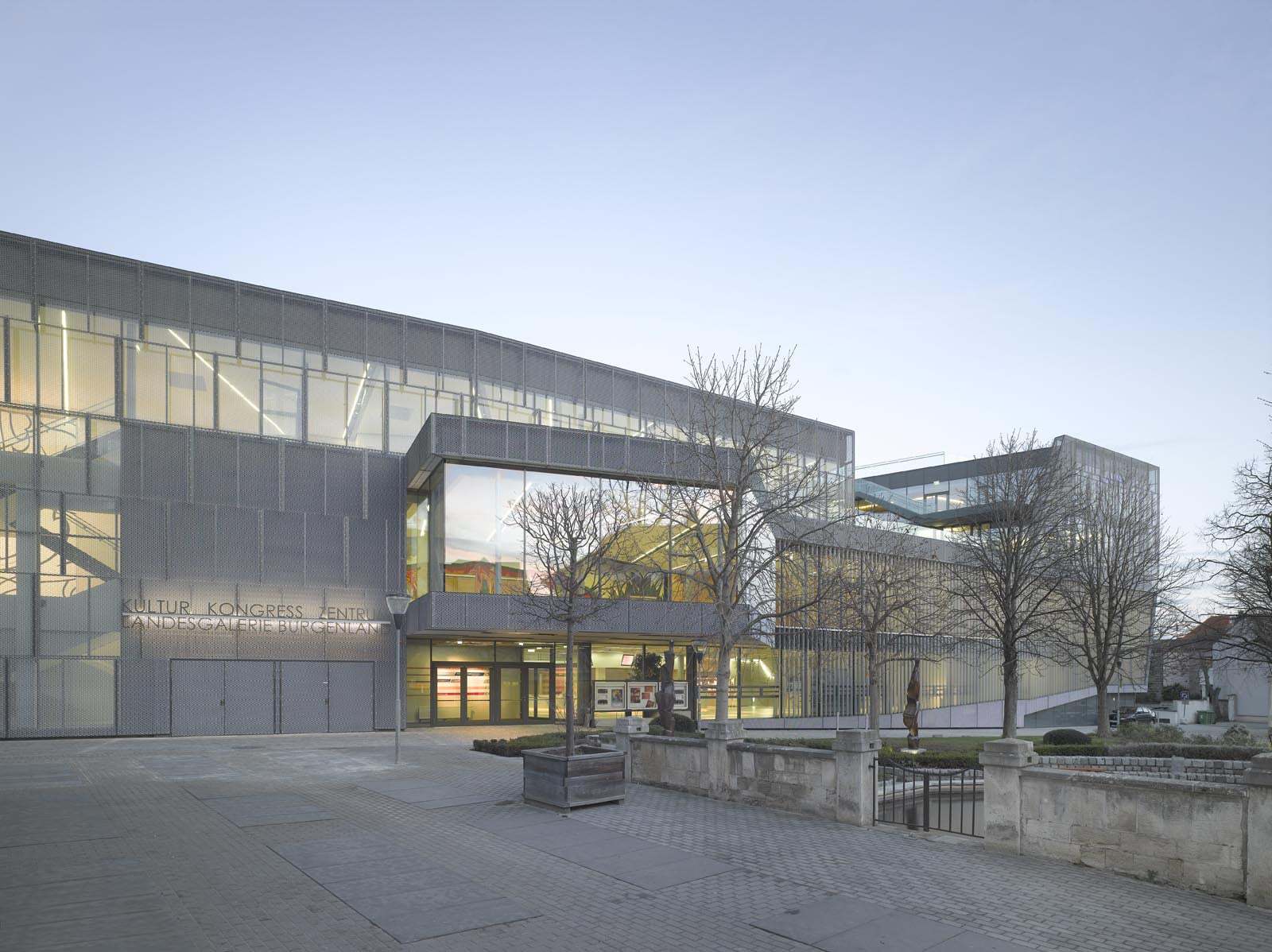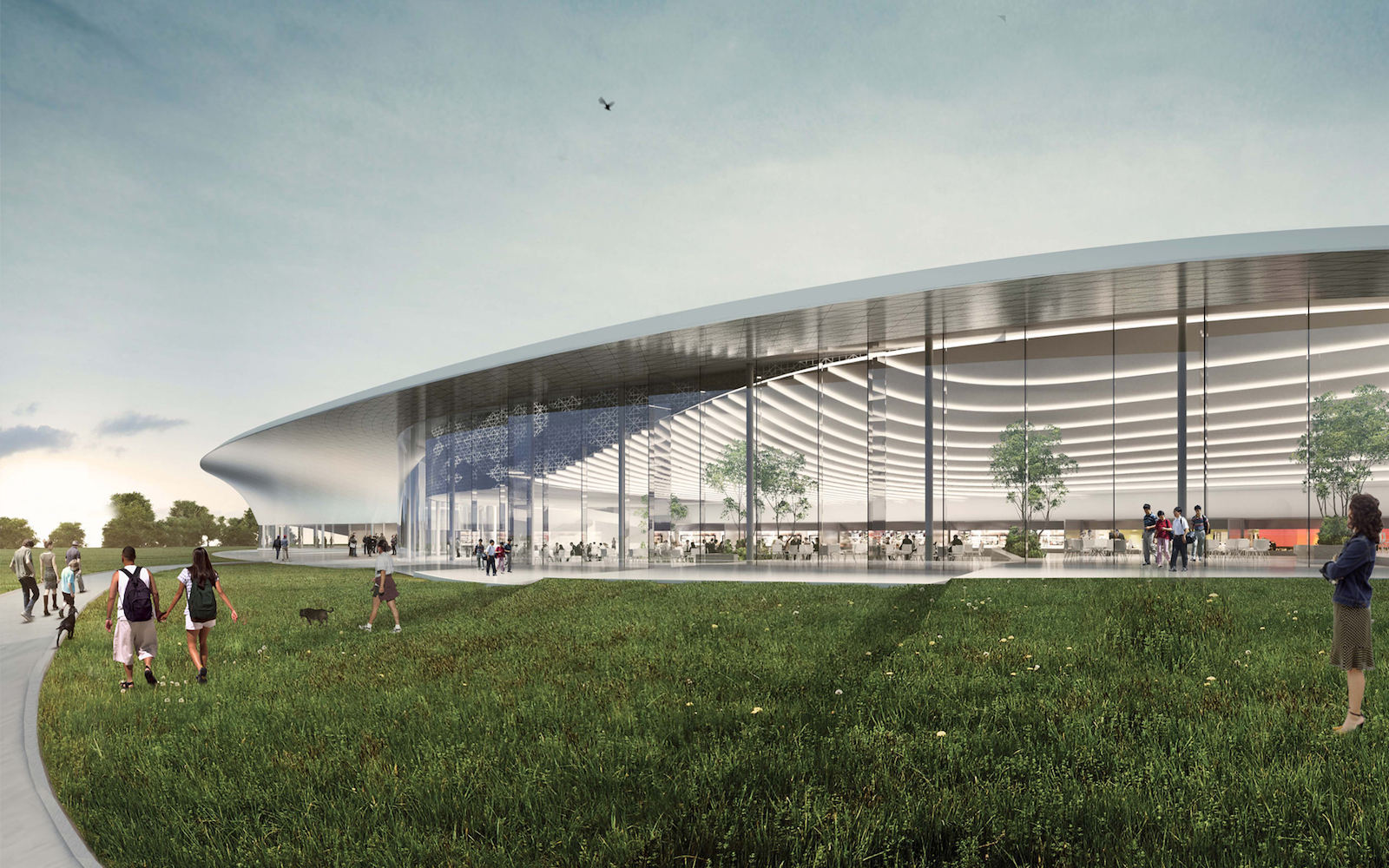The arena itself is, naturally, the main attractor. It is reached from the plaza and from level 1 and nestles at the southern corner of the site. The main axis of the oval is swivelled to the west in order to achieve the greatest possible opening in this direction. Despite the fluid spatial relationships and the way in which the volumes of the buildings are formulated, the line cut by the city motorway and the severity of the Rinderhalle trigger tendencies to form edges.
WH-Arena – Neu Marx
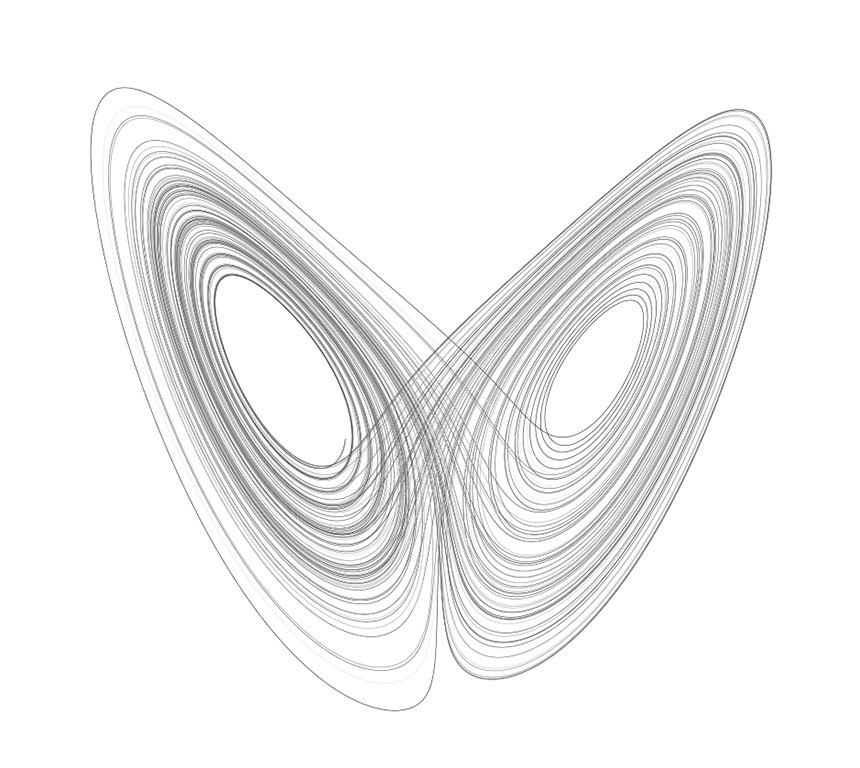
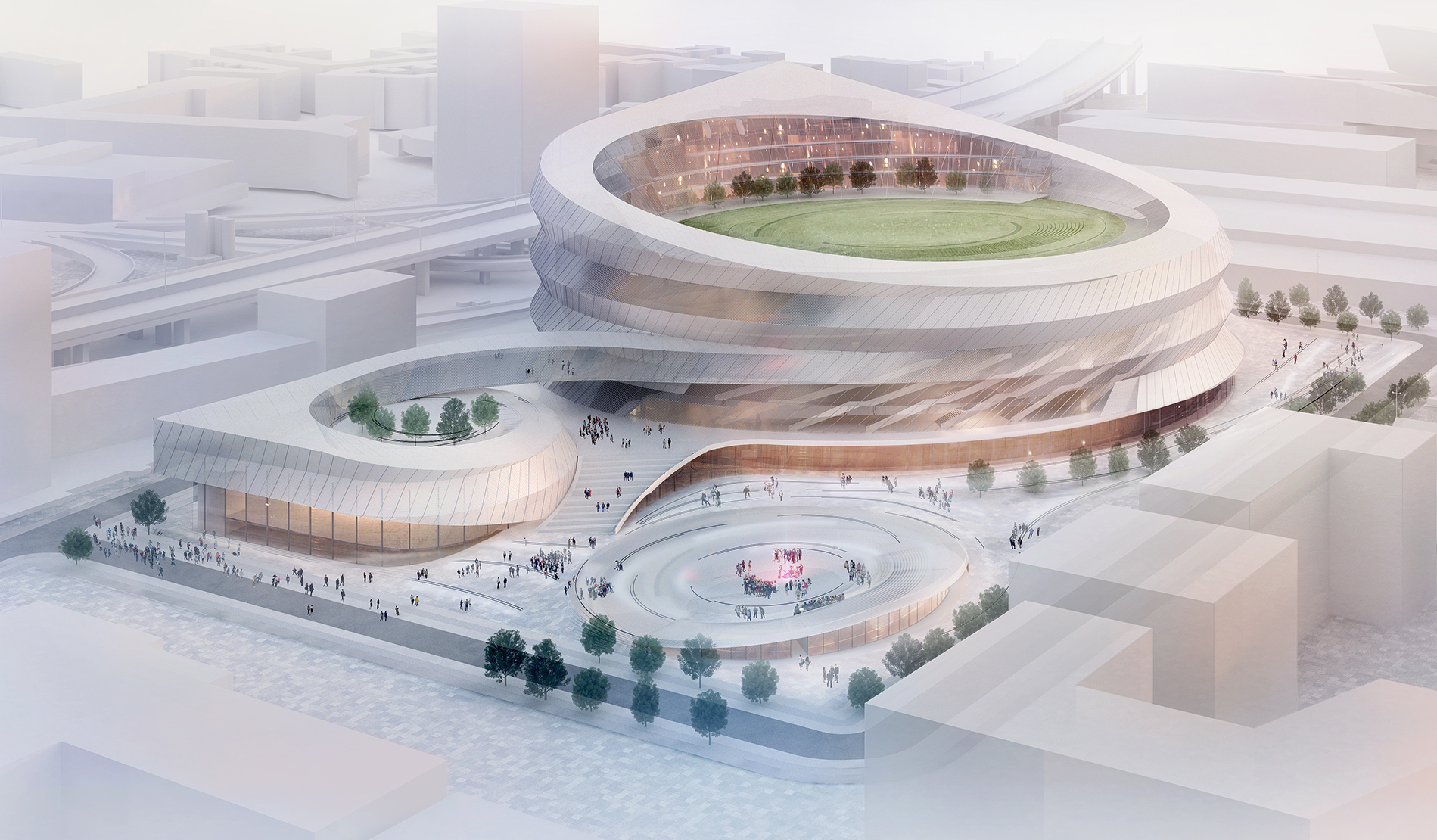
Year
2020
Venue
Vienna
State
Competition
Category
Culture
Size
133.573 m²
Year |
Venue |
State |
Category |
Size |
|---|---|---|---|---|
2020 |
Vienna |
Competition |
Culture |
133.573 m² |
Year
2020
Venue
Vienna
State
Competition
Category
Culture
Size
133.573 m²
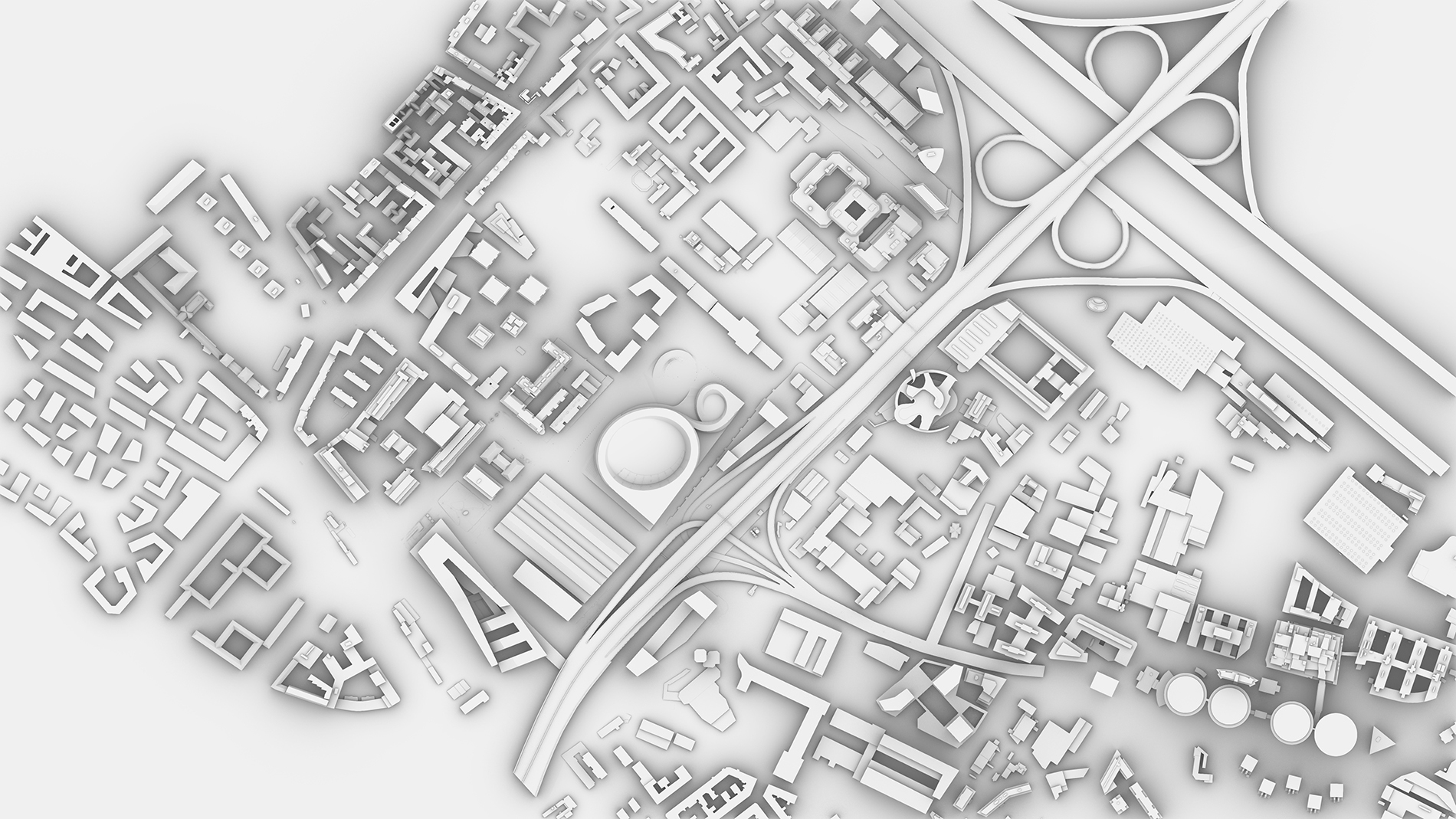
Essentially, we see the site along with the surrounding street areas as a field from which, through the process of developing and ordering several quite different circumstances and requirements, volumes and the figures that envelop them are produced by means of topological operations
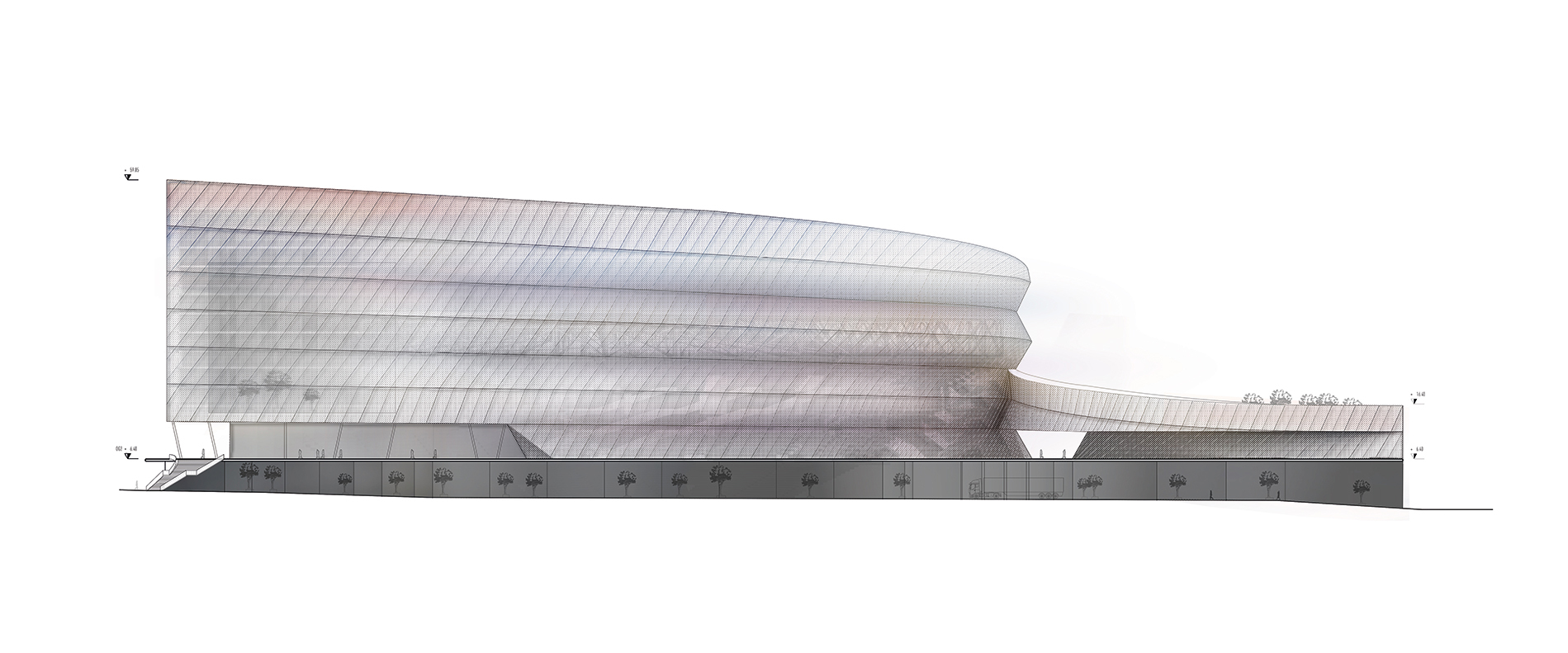
These are condensed in the south to make a sharp and striking corner at which, logically, the different stepped heights of the building culminate. This vertical edge forms a clear signal that is oriented towards the motorway and the high-rise buildings behind it, but also represents an endpoint of the complex in the image of the city from the respective pedestrian perspectives. This angular part of the building is programmed with additional office areas, which can be rented out, and, from the upper edge of the roof to the hall, with the hotel. Here, on the roof, in sharp contrast to the busy arena, there is an unexpected place of calm and serenity with green areas, gardens and groups of trees on a large terrace that hangs from the hotel tower and with a perfect view of the inner city of Vienna for the hotel rooms positioned the inside of the curve.
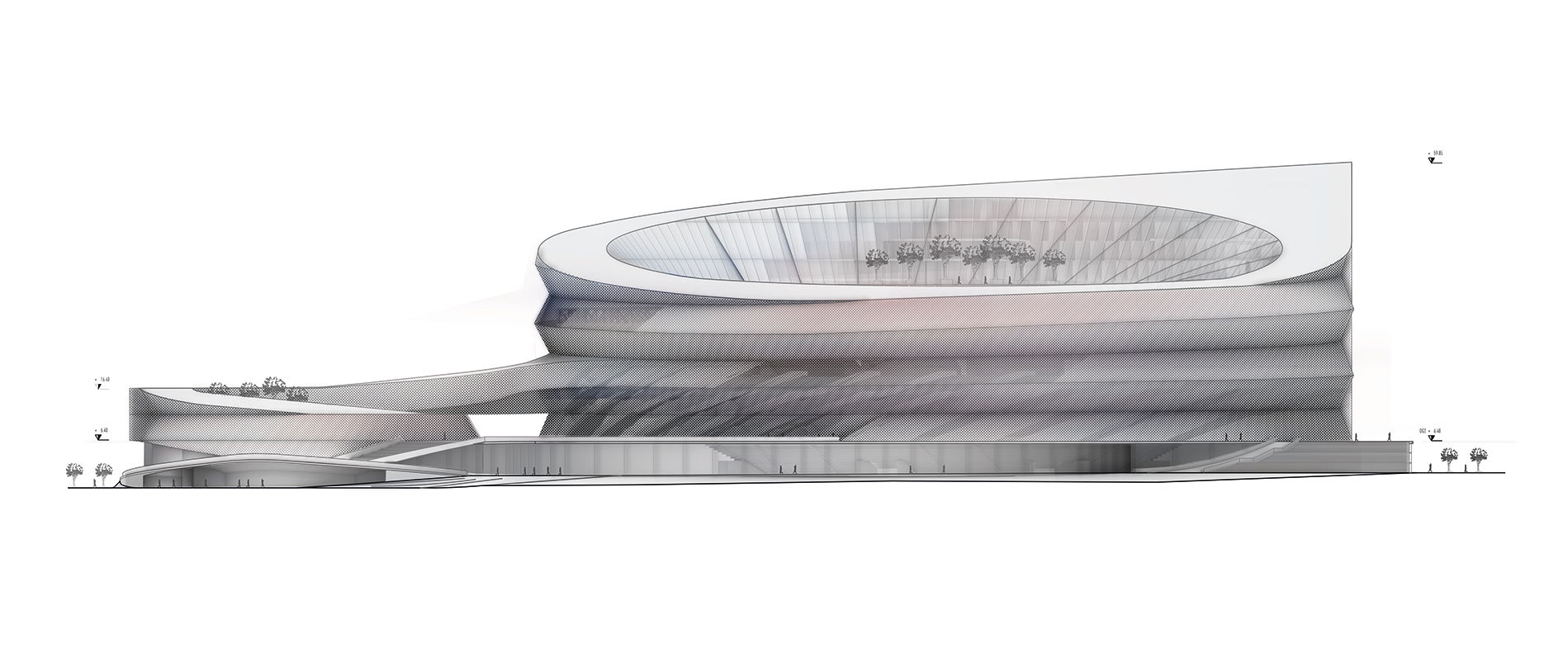
The arena as main attractor
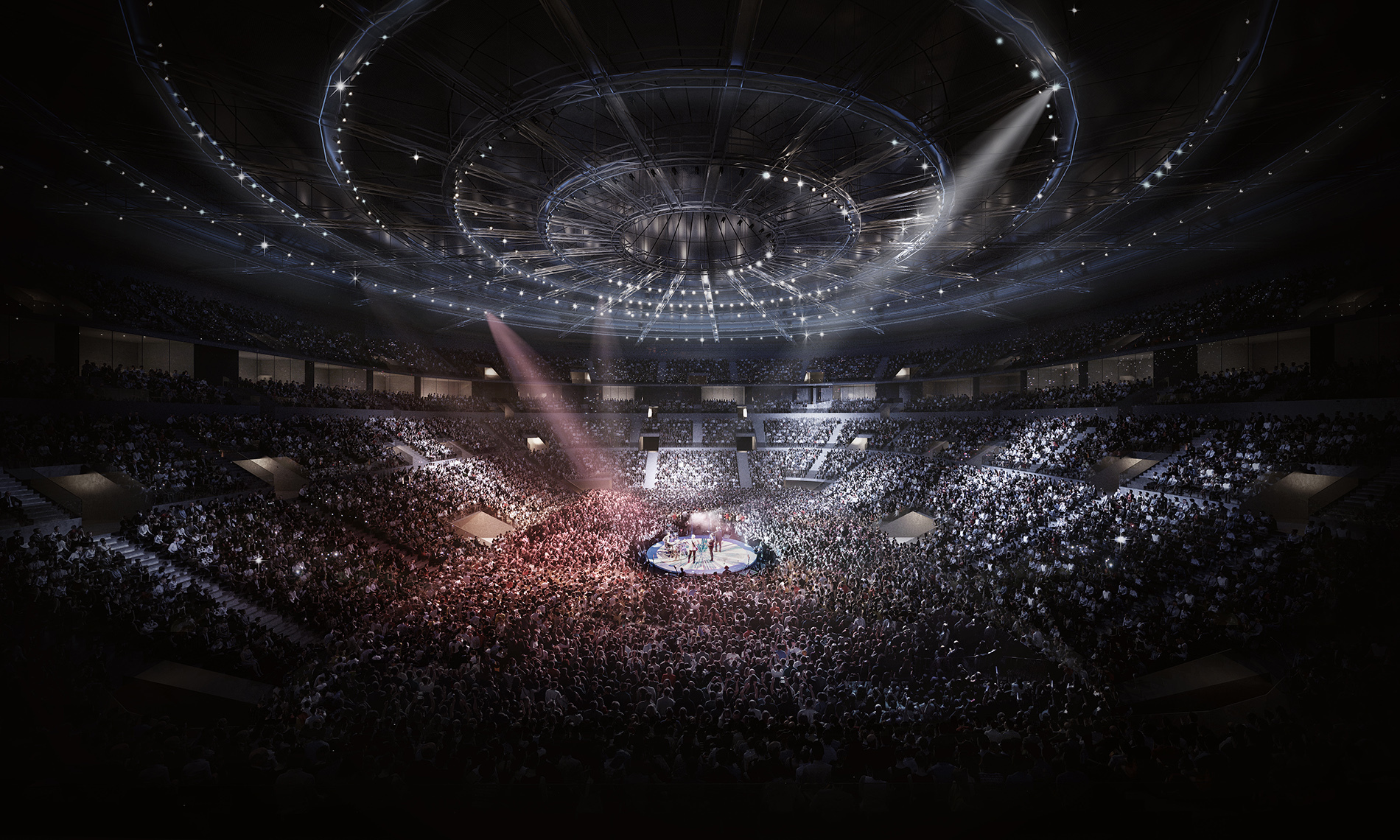
The interior of the arena will be dominated by the charged energy of the tiers of spectators on the one hand and, on the other, also by the design of the ceiling to the hall. Although closed off by the acoustic ceiling, the intention is that the walkways at catwalk level and the lighting rigs should trace the concentric radial structure of the Arena, in this way creating the impression of a gigantic chandelier. This could suggest a certain connection to historical Viennese concert halls and opera houses and help to anchor the building as the “Vienna Arena”.
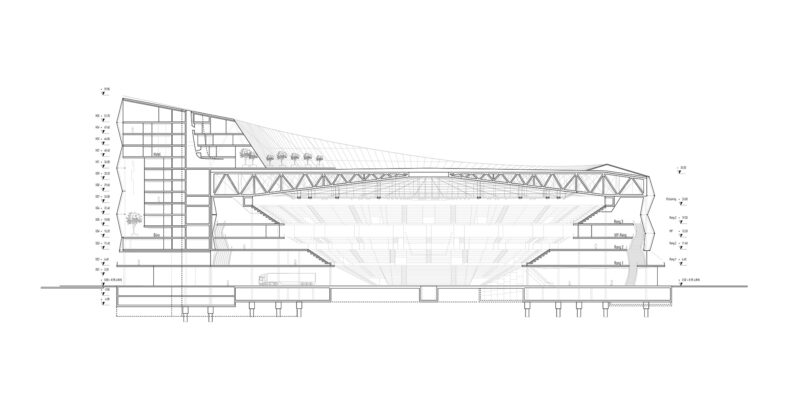
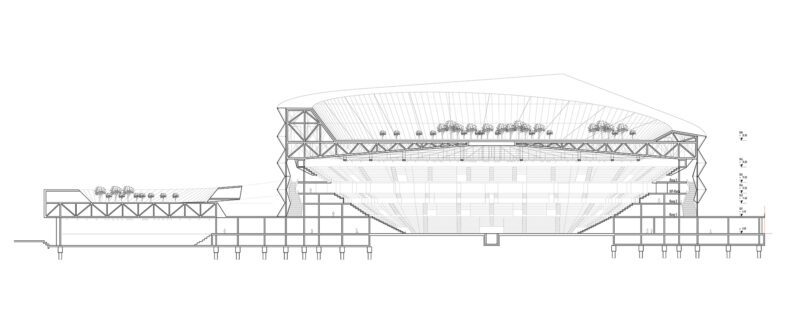
Structure
The structure of the WH-Arena consists of a plinth for the stands built of reinforced concrete, a wide-spanning steel roof, and a reinforced concrete multi-storey building.
In designing the structure emphasis was placed on an efficient construction method that makes economic use of resources. The roof of the arena has a span of 115x140 m. The grid of the main beams is laid out radially between 10 and 13.5 m and connected by rings. The oval geometry and the grid of the plinth are harmonised with each other. The top of the frame structure is cambered, while the underside slopes to the centre. Two circular rows of columns provide the bearing points for the roof structure, the edge of the bearing is a continuous tension ring.
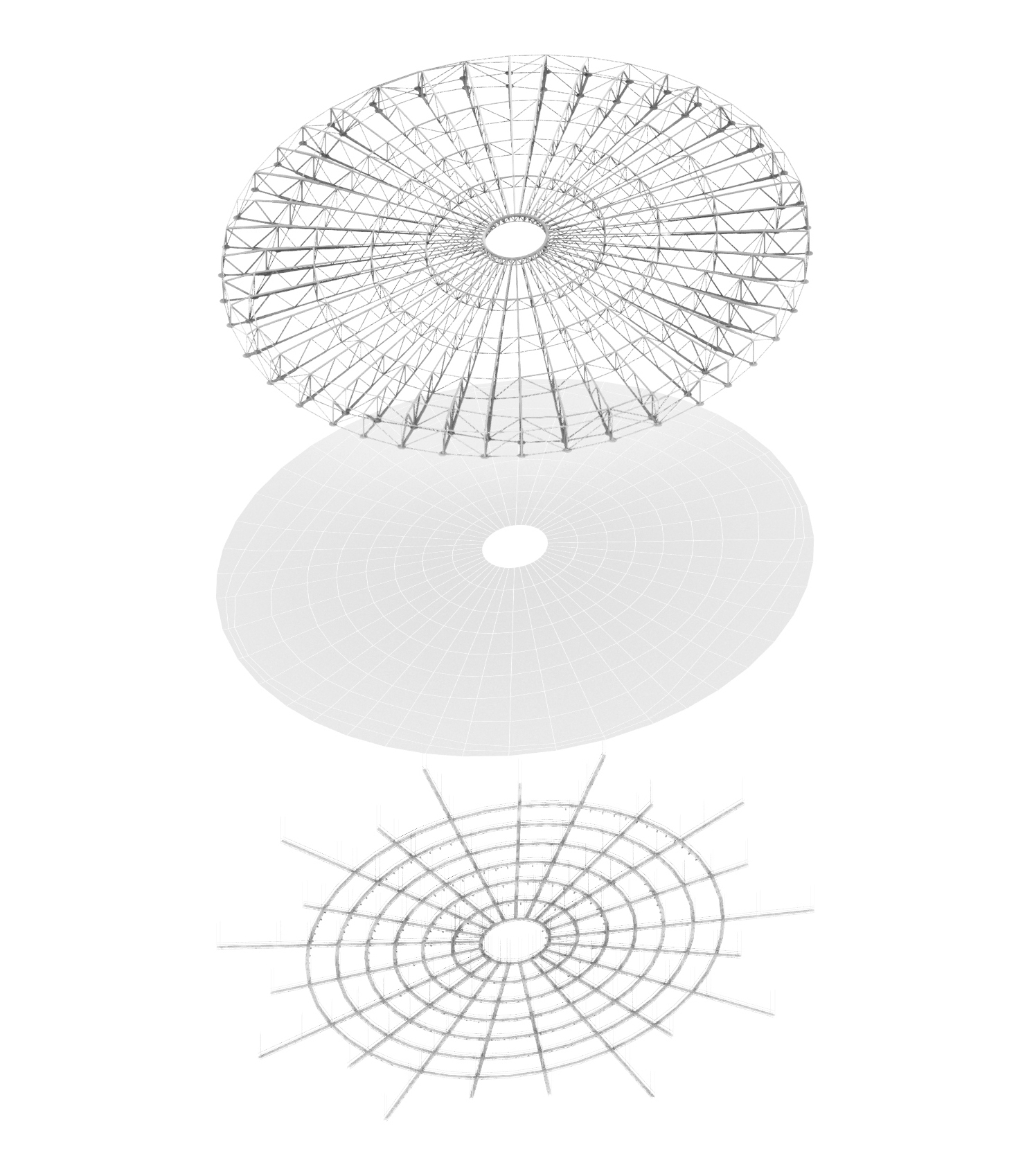
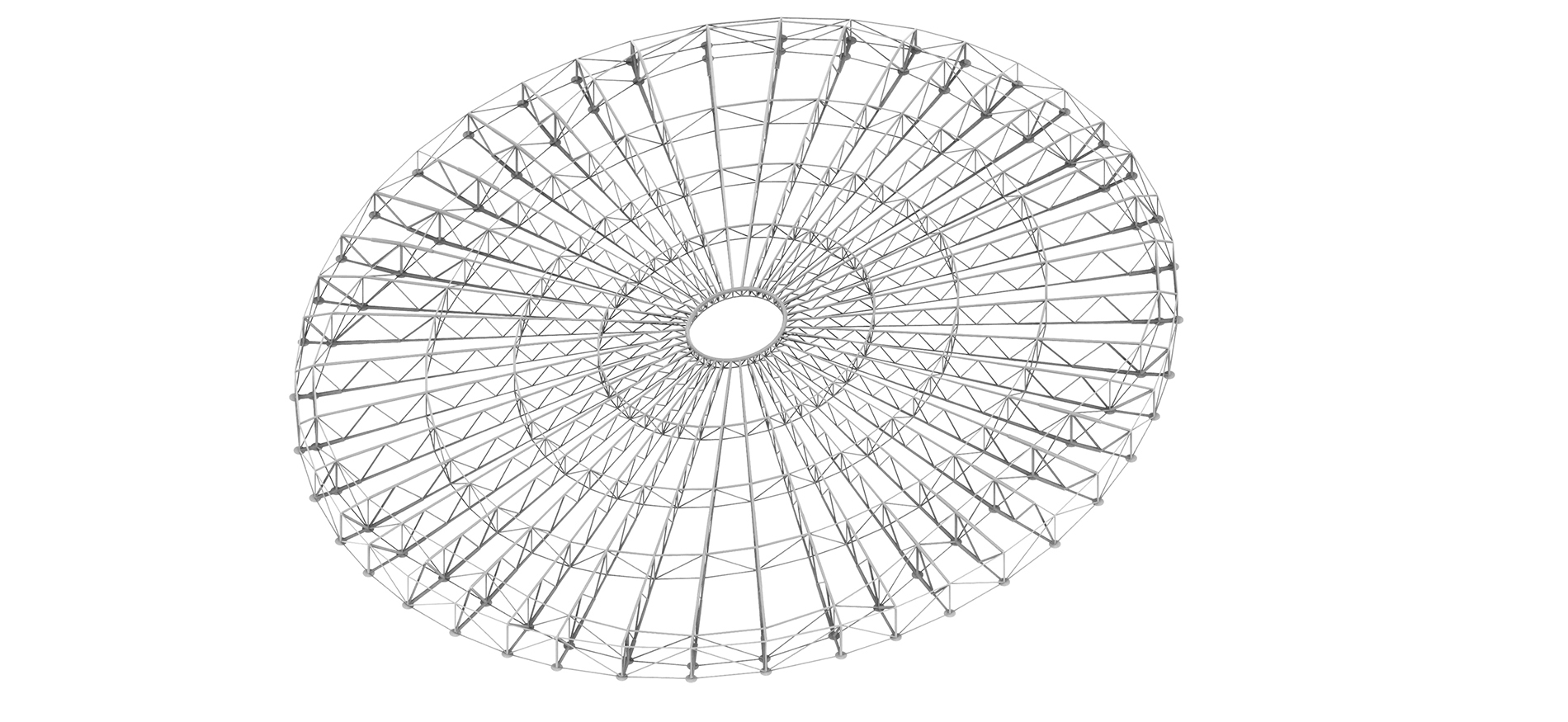
The frame construction is made of simple circular section tubes, dimensioned, and optimised to take the loads. The top and bottom beams are round tubes, which allow standard details to be used for all the connections. The diagonal elements are hollow tubes, rectangular in cross section, with optimised buckling resistance. All the sections are dimensioned according to the loads. The arena is braced by the walls of the grandstand and the core walls. On this account the major part of the plinth is built of in-situ concrete. The elements of the grandstand construction (sawtooth and “L”-shaped beams) can be prefabricated.
Most of the floor slabs of the upper levels are flat 30cm-thick reinforced concrete floors, while the basement levels have 25cm-thick floors with downstand beams. The grid of c. 7.5 x 7.5 m chosen for the basement levels reflects the use of these levels for carparking spaces.
Floors, slabs, columns and walls of the southern part of the hotel are made of reinforced concrete. The cross-sections and concrete grades of the columns are stepped and are optimised in accordance with the vertical transfer of loads. Horizontal bracing is provided by the loadbearing walls of the cores. The walls are fixed to the box formed by the basement and to the ground slab. The floors are designed as flat, in-situ concrete slabs and span beween walls and columns with a maximum span of 8 metres.
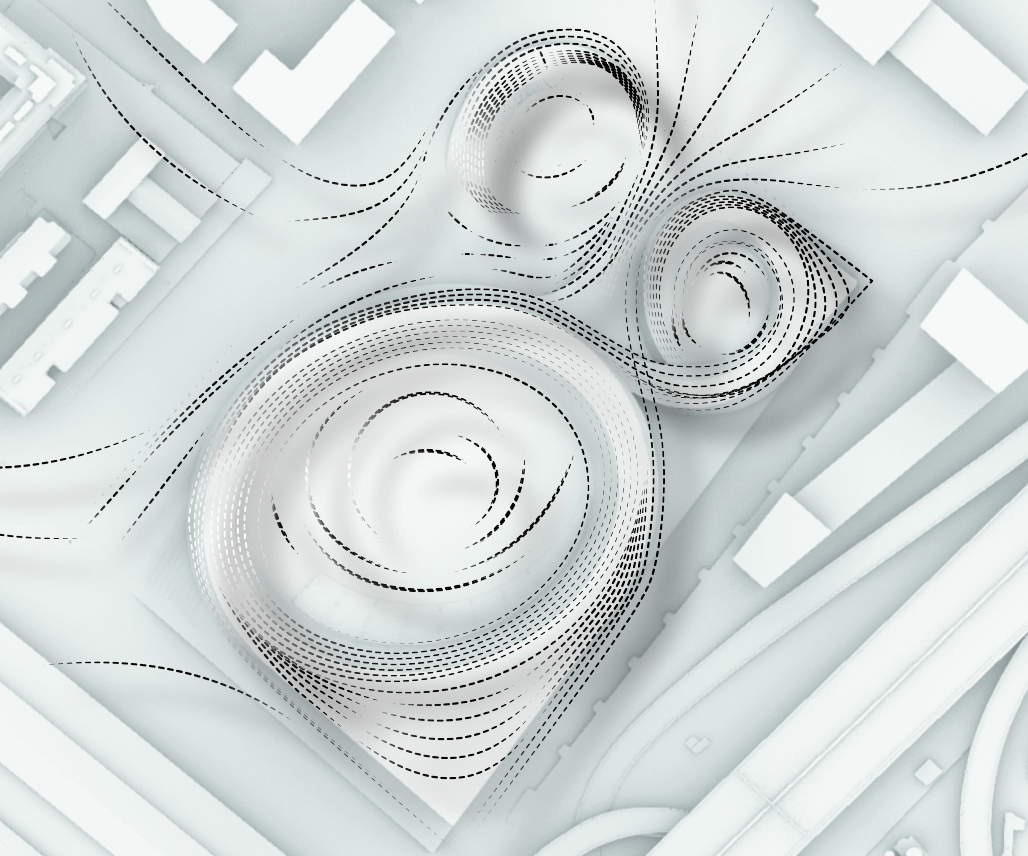
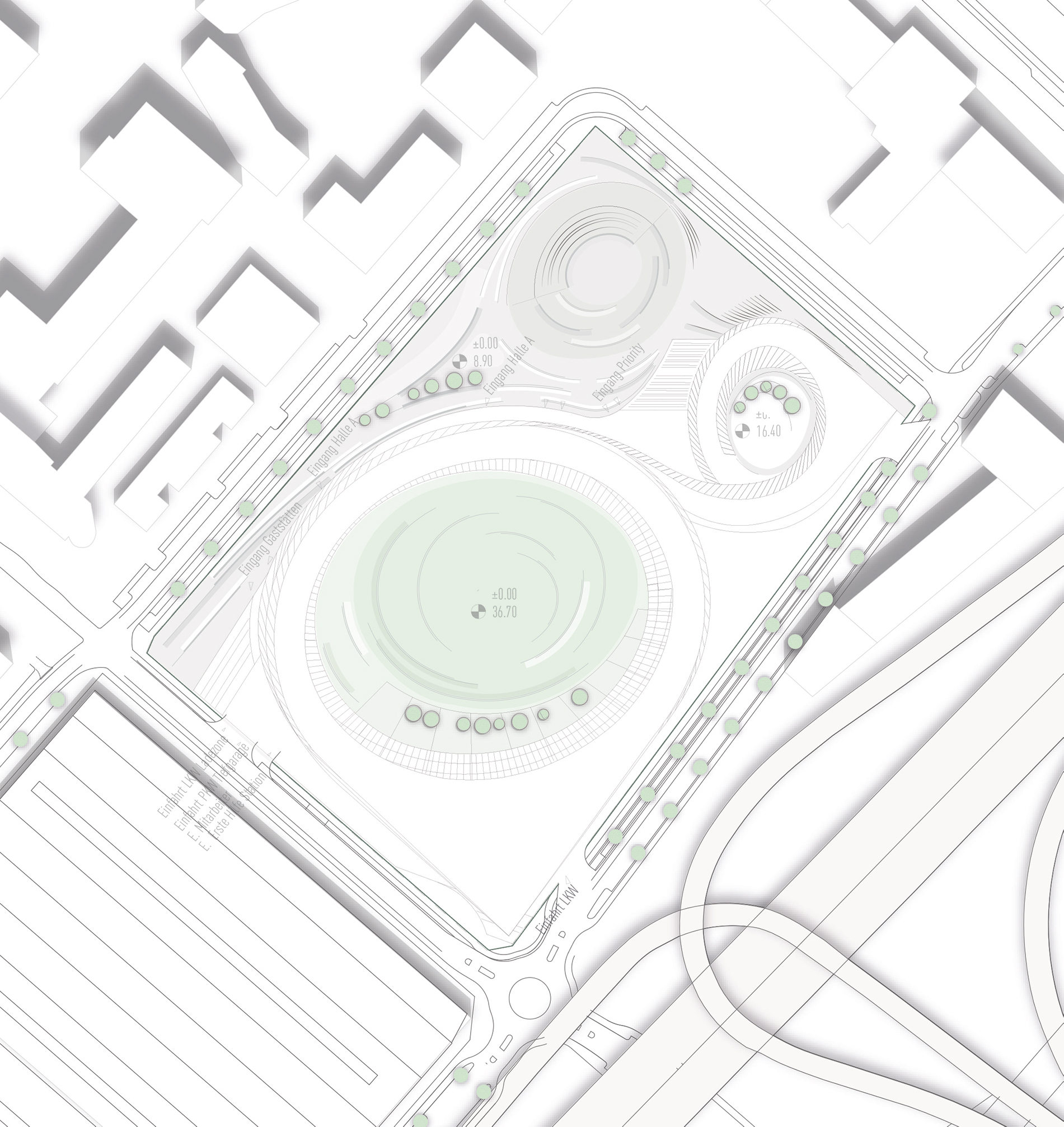
The facades are essentially lightweight in construction and consist in part of two layers with a construction plane between and they have different degrees of transparency, depending on the use of the spaces behind and the way in which outside space is to be addressed by light coming from inside. Therefore, we suggest three basic situations: a simple glass facade, a glass facade with a screen of shimmering silver expanded metal in front of it, and metal panels as an opaque situation with a second skin of expanded metal. The different mesh sizes of the expanded metal and the varied sequence of glazed and opaque strips behind allow the degree of transparency to be controlled and flowing transitions from open to closed to be achieved.
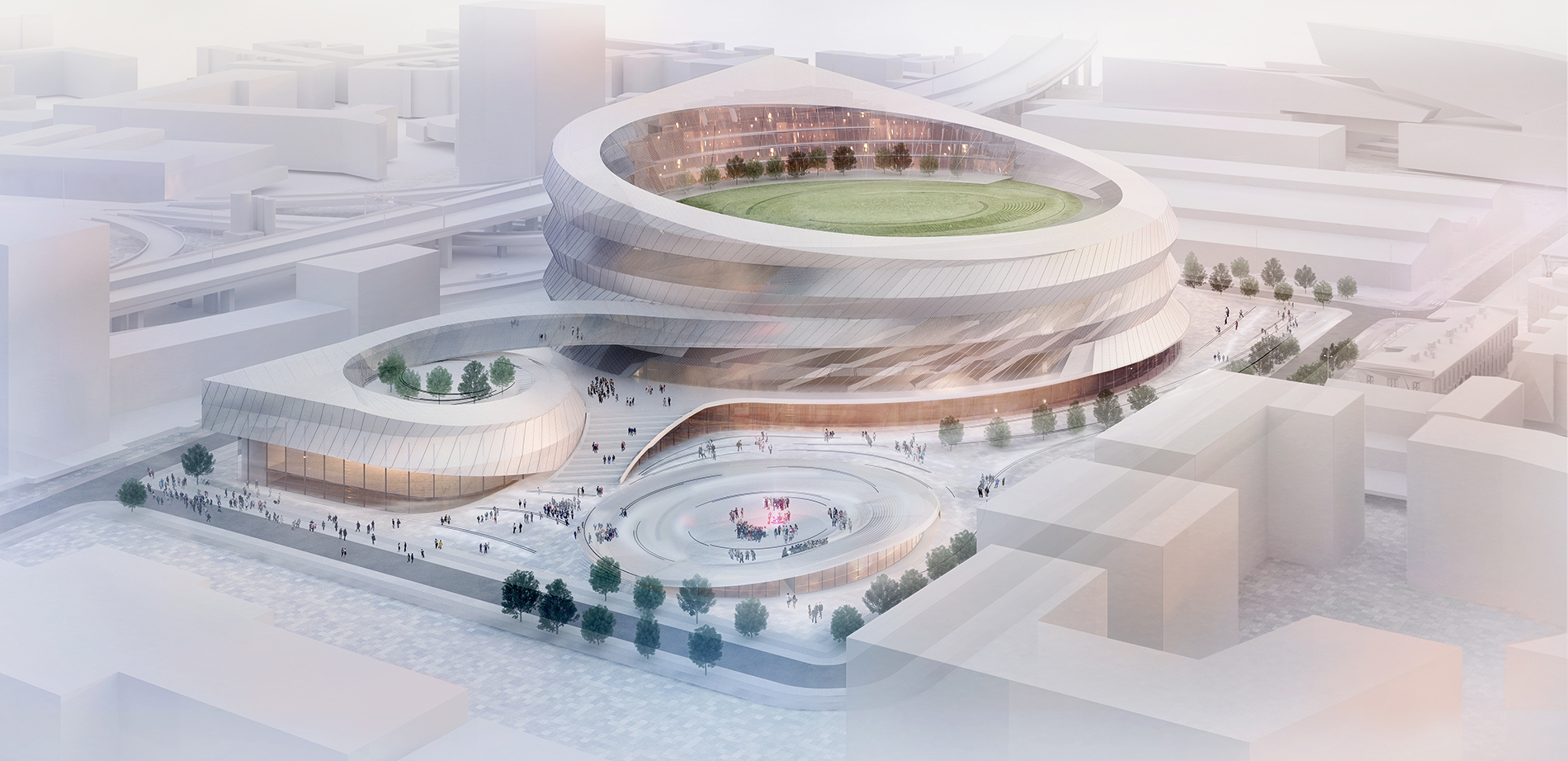
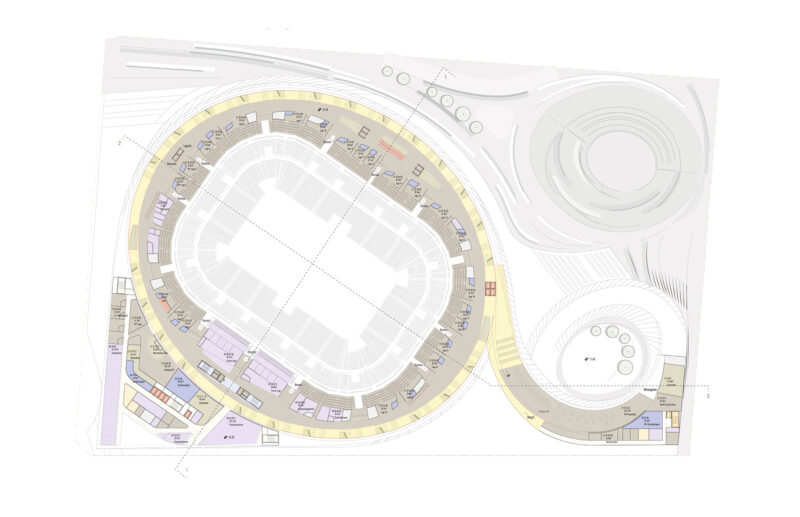
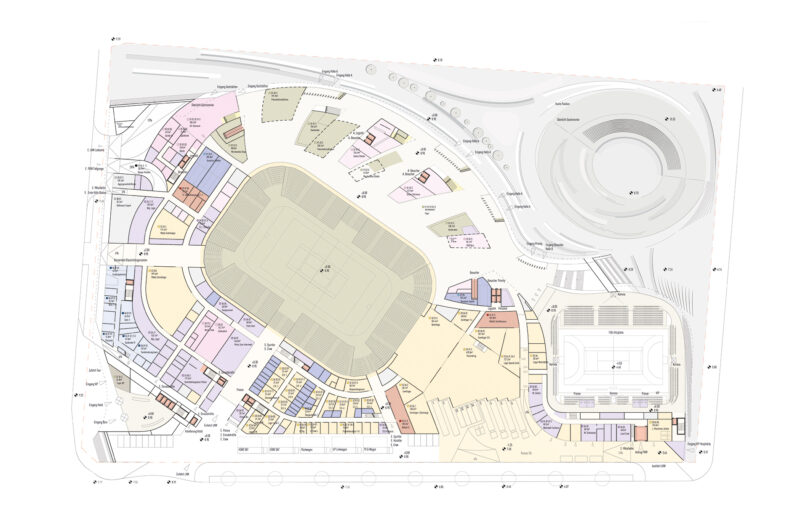
Architecture
Pichler & Traupmann Architects
Design Team
Bartosz Lewandowski (team leader)
Piotr Pindor
Merve Sahin
Jumi Radde
Ioana Constantin
Client
WH Arena Projektentwicklung GmbH
Structural design
Bollinger und Grohmann ZT GmbH, Vienna
Structural fire protection
Norbert Rabl ZT GmbH, Graz
Building physics
Müller-BBM GmbH, Munich
Landscape architecture
Carla Lo Landschaftsarchitektur, Vienna
Hard facts
Start of planning: 2020
Usable floor area: Arena 95.079 m²
Gross floor area: Adjoining building 38.494 m²
Use: Multifunctional arena
Scope: EU-wide open, double-stage competition
Renderings
Patricia Bagienski, Vienna
